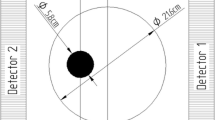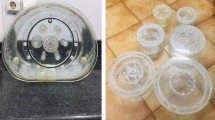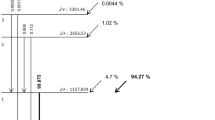Abstract
Objective
Lutetium oxyorthosilicate (LSO) contains natural radioactivity that emits beta particles and three gamma photons simultaneously. These beta particles and gamma photons increase the single and random rates in a positron emission tomography (PET) system while a beta particle and gamma photon produced in the same decay of Lu-176 and detected by another detector can be beta-gamma coincidence true events. The purpose of this work is to measure the single, random, and true count rates due to the natural radioactivity in LSO and determine the optimum lower energy threshold level for an energy window in an LSO-based clinical PET.
Methods
First, we measured the energy spectra of these beta particles and gamma photons in LSO using a single crystal to obtain the basic data. Then, we measured single, random, and true count rates of an LSO-based clinical PET from the natural radioactivity as a function of the lower energy threshold.
Results
In the PET, single and random count rates due to the natural background activity were gradually decreased as the lower energy threshold level increased. The true count rates due to the beta-gamma coincidence were more than 10 kcps below a lower energy threshold of 250 keV. However, these true count rates due to the natural radioactivity in LSO can be decreased to less than 1 kcps at a lower energy threshold level set at more than 350 keV.
Conclusion
With these considerations, in an LSO-based clinical PET, a lower energy threshold level set at above 350 keV is recommended.
Similar content being viewed by others
References
Melcher CL, J. Schweitzer S. Cerium-doped lutetium oxyorthosilicate: a fast, efficient new scintillator.IEEE Trans Nucl Sci 1992; 39: 502–505.
Ludziejewski T, et al. Advantage and limitations of LSO scintillator in nuclear physics experiments.IEEE Trans Nucl Sci 1995; 42: 328–336.
Vaska P, Alexoff DL. Effects of natural LSO radioactivity on microPET quantitation.J Nucl Med 2003; 44 (5): 138P.
Eriksson LA, Watson CC, Wienhard K, Eriksson M, et al. The EC AT HRRT: an example of NEMA scatter estimation issue for LSO based PET systems, presented at IEEE Nuclear Science Symposium and Medical Imaging Conference, Oct. 22, 2003, Portland, USA.
Erdi YE, Nehmeh SA, Mulnix T, Humm JL, Watson CC. PET Performance Measurements for an LSO-Based Combined PET/CT Scanner Using the National Electrical Manufacturers Association NU 2-2001 Standard.J Nucl Med 2004; 45 (5): 813–821.
Watson CC, Casey ME, Eriksson L, Mulnix T, Adams D, Bendriem B. NEMA NU 2 Performance Tests for Scanners with Intrinsic Radioactivity.J Nucl Med 2004; 45 (5): 822- 826.
Tarantola G, Zito F, Gerundini P. PET instrumentation and reconstruction algorithm in whole-body application.J Nucl Med 2003; 44 (5): 756–769.
Kadrmas DJ, Christian PE. Comparative evaluation of lesion detectability for 6 PET imaging platforms using a highly reproducible whole-body phantom with Na-22 lesion and localization ROC analysis.J Nucl Med 2002; 43 (11): 1545–1554.
Yamamoto S. Performance evaluation of a highly reflective multilayer optical film (MLOF) for a reflector of scintillator for PET.RADIOISOTOPES 2001; 50 (11): 570–575. (in Japanese with English abstract)
Huber JS, Moses WW, Jones WF, Watson CC. Effect of Lu- 176 background on singles transmission for LSO-based PET camera.Phys Med Biol 2002; 47: 3535–3541.
Author information
Authors and Affiliations
Corresponding author
Rights and permissions
About this article
Cite this article
Yamamoto, S., Horii, H., Hurutani, M. et al. Investigation of single, random, and true counts from natural radioactivity in LSO-based clinical PET. Ann Nucl Med 19, 109–114 (2005). https://doi.org/10.1007/BF03027389
Received:
Accepted:
Published:
Issue Date:
DOI: https://doi.org/10.1007/BF03027389




